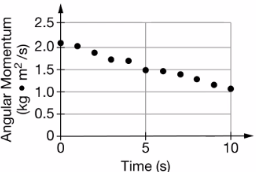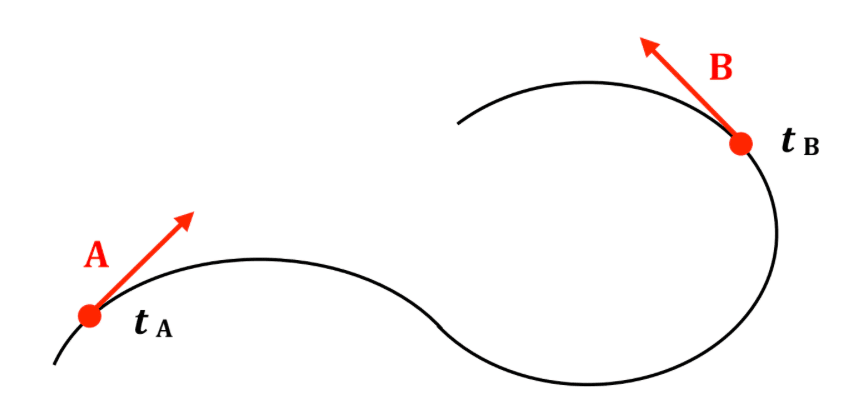A ball is kicked horizontally off a 20 m tall cliff at a speed of 11 m/s. What is the final velocity of the ball right before it hits the ground?
A block of mass \( m \) is attached to a horizontal spring with spring constant \( k \) and undergoes simple harmonic motion with amplitude \( A \) along the \( x \)-axis. Which of the following equations could represent the position \( x \) of the object as a function of time?

During the experiment, students collect data about the angular momentum of a rigid, uniform spinning wheel about an axle as a function of time, which was used to create the graph that is shown. A frictional torque is exerted on the wheel. A student makes the following statement about the data. “The frictional torque exerted on the wheel is independent of the wheel’s angular speed.” Does the data from the graph support the student’s statement? Justify your selection.
What force is necessary to stretch an ideal spring with a spring constant of \( 120 \) \( \text{N/m} \) by \( 30 \) \( \text{cm} \)?
A spring with a spring constant of \( 600. \) \( \text{N/m} \) is used for a scale to weigh fish. What is the mass of a fish that would stretch the spring by \( 7.5 \) \( \text{cm} \) from its normal length?
A \(1 \, \text{kg}\) mass and an unknown mass \(M\) hang on opposite sides of a pulley suspended from the ceiling. When the masses are released, \(M\) accelerates downward at \(5 \, \text{m/s}^2\). Find the value of \(M\).
Suppose you are a passenger traveling in car along a road that bends to the left. Why will you feel like you are being thrown against the door. What causes this force?
A blue ball is thrown upward with a velocity of \( 9 \) \( \text{m/s} \) upward from the top of a high cliff. At the same time, a red ball is dropped from the same spot. The red ball is observed to hit the ground below exactly \( 1 \) \( \text{s} \) before the blue ball. How high is the cliff?
Caleb is filling up water balloons for the Physics Olympics balloon toss competition. Caleb sets a \( 0.50 \text{-kg} \) spherical water balloon on the kitchen table and notices that the bottom of the balloon flattens until the pressure on the bottom is reduced to \( 630 \frac{\text{N}}{\text{m}^2} \). What is the area of the flat spot on the bottom of the balloon?
A vehicle is moving at a speed of 12.3 m/s on a decline when the brakes of all four wheels are fully applied, causing them to lock. The slope of the decline forms an angle of 18.0 degrees with the horizontal plane. Given that the coefficient of kinetic friction between the tires and the road surface is 0.650.
 An object travels along a path shown above, with changing velocity as indicated by vectors \( A \) and \( B \). Which vector best represents the net acceleration of the object from time \( t_A \) to \( t_B \)?
An object travels along a path shown above, with changing velocity as indicated by vectors \( A \) and \( B \). Which vector best represents the net acceleration of the object from time \( t_A \) to \( t_B \)?

A small block moving with a constant speed v collides inelastically with a block M attached to one end of a spring k. The other end of the spring is connected to a stationary wall. Ignore friction between the blocks and the surface.
By continuing you (1) agree to our Terms of Use and Terms of Sale and (2) consent to sharing your IP and browser information used by this site’s security protocols as outlined in our Privacy Policy.
Quick Start Guide
AP physics 1, AP C, honors and advanced physics students.
Quickly filter questions by units and more.


Here’s guide to using 5 UBQ filters.
GQ = general question, MCQ = multiple choice, FRQ = free response.


Click the check or bookmark button.
Now you’ll be able to see completed or bookmarked questions at a glance!
Answer keys, personalized for you.

Phy will be responsible for grading your FRQs and GQs.
No more copy and pasting. Just solve and snap.
Questions for Mastery

By continuing you agree to nerd-notes.com Terms of Service, Privacy Policy, and our usage of user data.